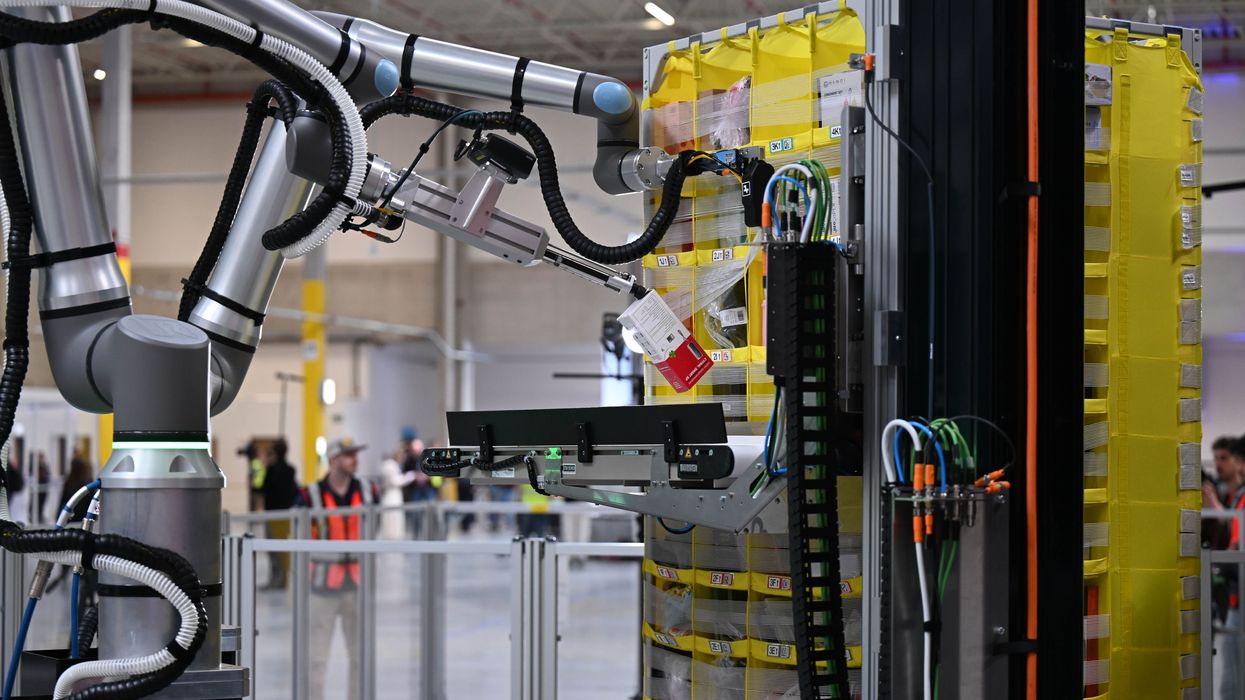Amid Mass Layoffs, Sanders Demands Amazon Explain Plans to Replace Workers With Robots, AI
"Are you going to simply dump these workers out on the street, or will you treat them with the dignity they deserve?" Sen. Bernie Sanders asked Jeff Bezos.
US Sen. Bernie Sanders on Tuesday demanded answers from Amazon as the corporate behemoth moved ahead with plans to lay off around 14,000 employees, with reports indicating the job cuts are just the start of a sweeping effort to replace workers with robots and artificial intelligence models in the coming years.
In a letter to Jeff Bezos, Amazon's billionaire founder and executive chairman, Sanders (I-Vt.) asked if the company has any plans to "provide help and support for the many hundreds of thousands of workers you will be replacing with robots and AI." The senator, a longtime critic of Amazon's treatment of warehouse workers, noted that the Amazon is poised to benefit substantially from tax breaks included in US President Donald Trump's signature budget law.
"Are you going to simply dump these workers out on the street, or will you treat them with the dignity they deserve?" Sanders asked Bezos, one of the richest men in the world. "Will you be providing a decent severance package for them? Will Amazon be maintaining their healthcare benefits? Will Amazon offer them a secure retirement plan? Or, will most of the savings and tax breaks simply be used to further enrich yourself and Amazon's wealthy stockholders?"
Sanders' letter came in the wake of Amazon's announcement that it is slashing its global workforce by roughly 14,000 employees, with additional cuts expected next year.
Reuters, which first reported the news, noted that the layoffs "offer an early look at the possibly broad effects of AI on workforces."
"Amazon CEO Andy Jassy flagged the potential for such losses in June, saying increased use of AI tools and agents would lead to more corporate job cuts, particularly through automating routine tasks," the outlet observed.
The layoffs followed explosive New York Times reporting that revealed Amazon's internal plans to replace more than half a million jobs with robots.
"At facilities designed for superfast deliveries, Amazon is trying to create warehouses that employ few humans at all," the Times reported. "And documents show that Amazon's robotics team has an ultimate goal to automate 75% of its operations."
It's not clear whether Amazon has any plans to provide substantive relief to workers and communities harmed by large-scale automation. Rather, the company appears focused on muting the public relations impact of mass job cuts.
The Times story notes that "documents show the company has considered building an image as a 'good corporate citizen' through greater participation in community events such as parades and Toys for Tots" as part of an anticipated need to "mitigate the fallout in communities that may lose jobs."
"Given all the support that you have received from the taxpayers of this country, don't you think that it might be appropriate to treat the American workers you are displacing with respect and compassion?"
Sanders, who has voiced alarm over the rapid development of AI technology and its implications for workers and humanity at large, warned in his letter Tuesday that "if Amazon succeeds on its massive automation plan, it will have a profound impact on blue-collar workers throughout America and will likely be used as a model by large corporations throughout America, including Walmart and UPS, to displace tens of millions of jobs."
Addressing Bezos directly, Sanders wrote that "the federal government has been very generous to you and Amazon," noting that the company has repeatedly avoided federal income taxes despite massive profits. The senator added that US taxpayers have effectively subsidized Amazon as the company pays delivery drivers, warehouse workers, and other employees such low wages that they're forced to rely on public assistance to get by.
"Given all the support that you have received from the taxpayers of this country, don't you think that it might be appropriate to treat the American workers you are displacing with respect and compassion?" Sanders asked Bezos. "I look forward to hearing back from you as soon as possible as to how you will protect the workers you are displacing."


